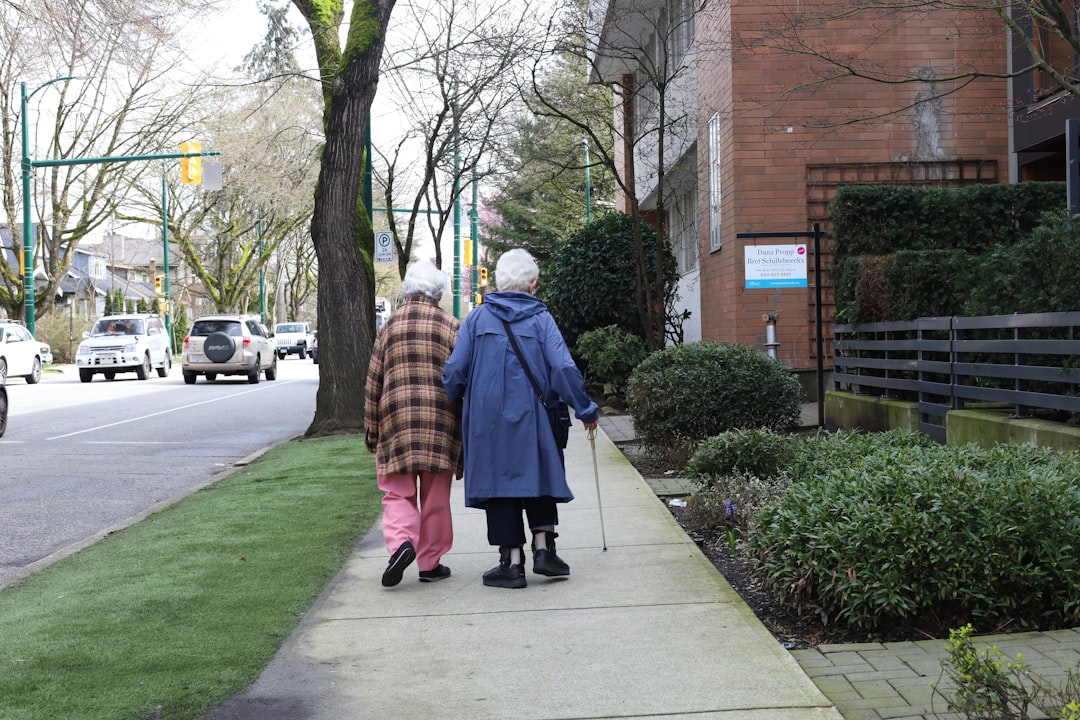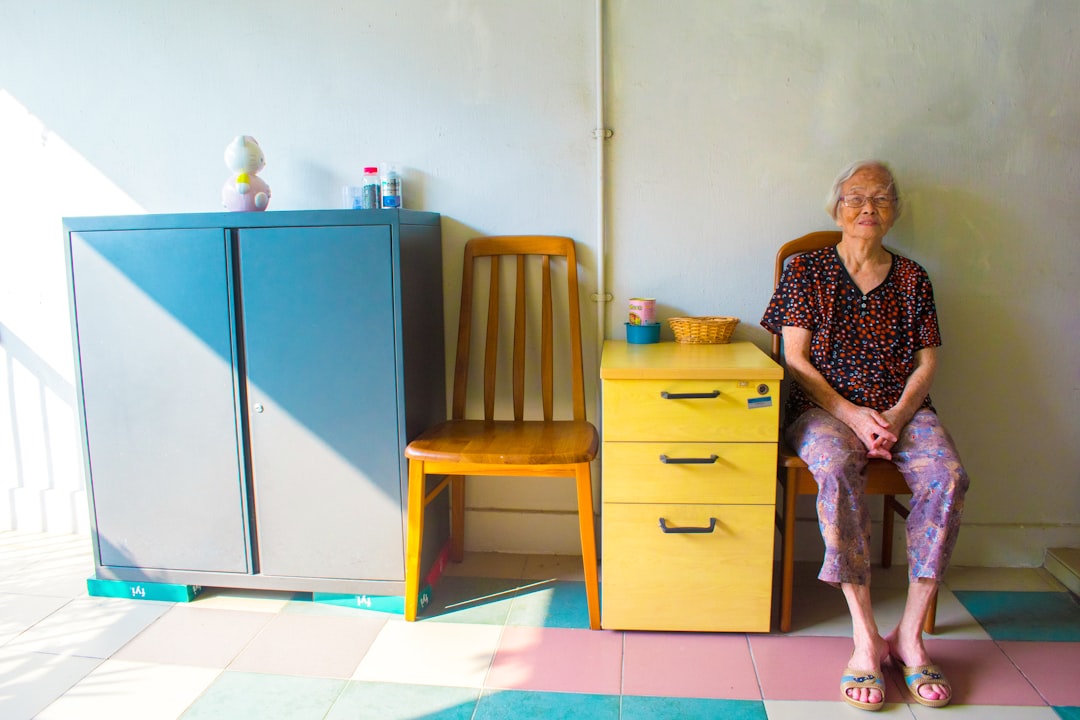

Engage prospects with a scan and streamline customer engagement with FREE QR code marketing tools by Sona – no strings attached!
Create a Free QR CodeFree consultation

No commitment

Engage prospects with a scan and streamline customer engagement with FREE QR code marketing tools by Sona – no strings attached!
Create a Free QR CodeFree consultation

No commitment
Adult foster care homes are tasked with delivering personalized, high-quality care while maintaining strong relationships with residents and their families. In a competitive landscape, building trust and demonstrating resident satisfaction are key to long-term success. As regulations tighten and expectations for transparency grow, having reliable, actionable feedback is not just a best practice, it is a strategic imperative.
Traditional feedback collection methods, such as paper forms and in-person interviews, often result in low response rates, incomplete data, and administrative headaches. These analog processes make it difficult to identify urgent issues, track satisfaction trends, or share success stories in real time. Missed or unidentified concerns can impact compliance and may jeopardize resident well-being and the organization’s reputation. Without reliable processes, high-value insights from families and residents can remain invisible, leading to lost opportunities for improvement or early intervention.
QR codes offer a modern solution by seamlessly connecting offline care environments to digital feedback tools. By placing QR codes at strategic touchpoints throughout an adult foster care home, providers can bridge the gap between missed engagement and real-time insight. This approach allows teams to capture feedback from residents, families, and staff instantaneously, helping organizations surface concerns early, track satisfaction trends, and demonstrate a commitment to continual improvement in a secure and accessible way. Some homes use these tools to ensure that all voices are heard, even from those who prefer not to use traditional channels. For a broader introduction to campaigns and analytics, see QR codes in marketing.

Many adult foster care providers struggle with feedback gaps, as anonymous or hard-to-reach participants often go untracked, delaying response to critical issues. QR codes bridge the gap between the physical care environment and actionable digital feedback, helping homes improve daily operations, enhance compliance, and demonstrate resident satisfaction.
Start by identifying the most important outcomes for your home: faster detection of concerns, improved family engagement, or stronger compliance documentation. Then map QR codes to the real-world moments when residents, families, or staff are most willing to share. When QR-enabled surveys are easy to scan and mobile-optimized, response rates and data quality increase, while administrative effort decreases. For quick setup, try Google Forms QR codes.
A centralized QR code platform can help these organizations automate survey distribution, analyze patterns, and tie actionable insights directly into resident care plans. Linking feedback to care documentation turns once-anonymous suggestions into opportunities for individualized improvements and helps demonstrate that the home listens, learns, and acts.

Adult foster care homes face recurring barriers to timely, quality feedback: sensitive issues can be hard to voice, paper forms create delays, and not every visitor or staff member has time for an in-person interview. QR codes simplify participation by removing friction and allowing anyone with a smartphone to share insights in the moment. The result is a broader, more representative picture of experiences across residents, families, and staff. For additional context, see this overview of QR codes in senior living.
QR codes also give leaders visibility into what is working and what needs attention. Instead of hunting through binders or piecing together anecdotal comments, administrators can see scan rates by location, sentiment trends over time, and the link between specific touchpoints and outcomes. This creates a culture of continuous improvement that is grounded in real data.
Placing QR codes on orientation packets, visitor logs, event signs, and discharge materials allows homes to capture timely feedback tied to real experiences. This ongoing stream of insight helps administrators proactively surface risks, validate improvements, and celebrate the moments that matter. For signage examples, see event signs.

Not all QR codes serve the same purpose. Selecting the right format for each use case ensures a seamless and secure experience for residents, families, and staff. Feedback programs in adult foster care homes typically rely on mobile-optimized web forms, but other formats strengthen communication and responsiveness across the care journey.
The most effective implementations combine multiple QR formats while standardizing branding and calls to action. For example, a dining room poster might link to a two-minute satisfaction survey while a staff lounge flyer links to an anonymous suggestion form. Having the right format in the right place increases both participation and relevance.
Dynamic QR codes, which can be edited without reprinting, are recommended for most feedback workflows. Use static codes for stable destinations like a general information page. For anything that benefits from trackability, segmentation, or A/B testing, dynamic QR codes offer the flexibility and analytics that analog processes cannot match.

Growth in adult foster care is not just about census. It includes higher satisfaction, stronger referrals, improved compliance, and better employee retention. QR codes uncover growth opportunities by catching feedback precisely when and where experiences happen. The right placement strategy converts everyday interactions into insight that guides smarter decisions. For additional ideas, this guide on senior care marketing outlines practical QR strategies.
Begin with a walkthrough of your facility and routine workflows. Identify where residents, families, and staff pause, wait, or look for information. These are prime moments to invite input. Consistency matters: recurring placements such as table tents in dining areas or decals near exits reinforce scanning behavior and increase participation over time.
Strategic placement often reveals blind spots such as low satisfaction in a specific wing or recurring maintenance frustrations on evening shifts. Use these insights to prioritize improvements and demonstrate responsiveness to residents, families, staff, and regulators.

Adult foster care leaders can design QR programs that address everyday challenges across the resident journey. Targeted use cases streamline communication, strengthen trust, and reduce risk by turning casual observations into documented, actionable feedback.
Pair each use case with a clear objective and owner. For example, assign the activities director to weekly review of recreation feedback and the administrator to triage safety concerns. Clear accountability ensures feedback does not stall and that wins are shared with the community.
Some homes also use QR-driven feedback to identify enthusiastic family advocates who are willing to provide testimonials or referrals. By capturing consent within the form, homes can invite willing families to participate in case studies, reviews, or community outreach.
Every QR scan contains context: who scanned, where it happened, and why. Adult foster care homes can harness this context to segment audiences and personalize follow-up while respecting privacy and consent. Segmentation improves relevance, which improves response, which ultimately improves outcomes. For campaign execution ideas, see Sona’s Playbook on intent-driven retargeting.
Use distinct QR codes for residents, families, and staff, and for specific contexts like admissions, activities, or discharge. Paired with dynamic links and tracking parameters, each scan enriches your understanding of the journey. Integrate scan data with your CRM or engagement tools to coordinate timely, personalized communications.
Be mindful of privacy. Avoid retargeting ads that could reveal sensitive information or imply health status. Focus on consent-based communication such as email or SMS that provides support resources, surveys, or follow-up from the care team. A platform like Sona QR can automate segmentation while providing clear audit trails and data governance controls.
Adult foster care homes often rely on print materials, tours, community events, and referral partners. Without digital links, these channels can be hard to measure and optimize. QR codes connect offline engagement to digital experiences, creating a consistent feedback loop that strengthens trust and makes outcomes visible. To measure offline-to-online impact, review Sona’s guide to offline attribution.
A connected approach does not require a major technology overhaul. Start by adding QR codes to the materials you already produce, then standardize data flow into your analytics or CRM tools. As you learn which placements drive the most valuable feedback, refine messaging and scale what works.
By leveraging a central QR code management platform, providers can keep messaging consistent, monitor performance across placements, and adjust quickly when data highlights an underperforming asset. Sona QR simplifies this orchestration by managing codes, destinations, and scan analytics in a single dashboard.
Many campaigns underperform because critical planning steps are missed or results are not measured effectively. A structured checklist keeps your program aligned with care goals and compliance requirements, and it ensures residents, families, and staff know their feedback will be taken seriously.
Use the following steps to plan, launch, and refine a QR-driven feedback program without overloading your team. Add owners and due dates to each step, and schedule quarterly reviews to keep content current and to share results with stakeholders.
Start with the outcomes that matter most. For example, reduce average time to follow up on complaints from five days to 48 hours, or raise family satisfaction on communication and responsiveness by 15 percent in 90 days. Clear goals guide everything from placement to form design.
Document the specific issues you want to track such as dining quality, activities engagement, medication management questions, or staff communication. Translate goals into measurable indicators and decide how you will report progress to your leadership team and regulators.
Choose dynamic QR codes for flexibility, analytics, and centralized management. Dynamic codes let you update destinations, change language versions, and test different calls to action without reprinting materials.
Select supporting tools that fit your workflows. A platform like Sona QR centralizes code generation, branding, and tracking, while Sona.com connects scan data to buyer journeys, CRM records, and multi-touch attribution if you use QR codes in outreach or referral campaigns.
Design for inclusivity and clarity. Use high-contrast colors, large fonts, and clear instructions such as Scan to share your feedback. Include language options common among residents and families, and provide a printed alternative for those who cannot scan.
Keep forms short and mobile-friendly. Ask only what you need and explain how the information will be used. Consider adding optional voice input or accessibility-friendly controls to remove barriers for residents with limited dexterity or vision.
Map placements to real-world workflows so scanning feels natural. For example, table tents in dining areas, decals at exits, posters in staff break rooms, and flyers in admission folders. Place codes at eye level with good lighting and provide stable surfaces for easy scanning.
Pilot in a few locations before scaling. Track scan rates, completion rates, and feedback quality, then adjust messaging, design, or placement to improve performance. Replace or refresh materials regularly to maintain visibility.
Measure results continuously and meet regularly to review insights. Pair quantitative data such as scan volume and completion rates with qualitative comments to understand root causes and opportunities. Turn findings into action plans, then report back to your community.
Share what you learn with residents, families, and staff. Highlight improvements driven by feedback, and recognize contributors when appropriate. Visible follow-through creates a virtuous cycle of higher participation and stronger trust.
Following these steps helps ensure that insight collection is not left to chance. Each scan becomes a data point you can act on, and your feedback program evolves into a cornerstone of quality improvement and compliance.
Connecting everyday feedback to organizational outcomes is critical for both care quality and sustainable growth. Comprehensive analytics reveal which placements and messages drive engagement, which issues require immediate attention, and how feedback correlates with satisfaction scores, referrals, and retention.
Tracking should not end at the scan. Homes benefit most when they link scan behavior to survey completion, sentiment trends, and follow-up actions. With Sona QR you can track scans by location, device, and time, then enrich records in tools like HubSpot or Salesforce. Sona.com extends this by unifying scans with website activity, email engagement, and other touchpoints, which is especially useful when QR codes support outreach or referral initiatives. For measurement frameworks, review Sona’s guide to multi-touch attribution.
End-to-end transparency ensures key engagement signals are surfaced quickly and acted on with accountability. Strong analytics also make it easier to share wins with stakeholders, from residents and families to owners, boards, and regulators.
Sustaining QR-driven momentum requires a blend of consistent execution, clear communication, and smart automation. As your program matures, small refinements can deliver outsized gains in participation and satisfaction.
Use the following best practices to keep engagement high and insights actionable. Prioritize the tips that match your facility’s size, staffing model, and community needs.
As a creative example, place QR codes on laminated activity calendars to capture quick event ratings, then share the monthly highlights with your community. Another idea is to add QR stickers near maintenance points like laundry rooms or thermostats for instant reporting, which reduces downtime and improves comfort.
Missed, anonymous, or unstructured feedback poses genuine risks for adult foster care homes, from compliance gaps to preventable dissatisfaction. QR codes transform everyday moments into opportunities for timely, measurable interaction. Homes that integrate QR-driven insight collection into daily routines can proactively address concerns, elevate satisfaction, and differentiate themselves in a competitive sector by showing clear evidence of listening and improvement.
Digital transformation is reshaping adult foster care, creating new expectations for transparency, responsiveness, and data-driven decision making. QR codes are a practical way to meet those expectations with minimal friction. When paired with a centralized platform like Sona QR for code management and scan analytics, and Sona.com for attribution and journey analysis, providers can capture feedback in real time, route it to the right teams, and connect improvements to measurable outcomes. The result is a continuous loop of engagement and action that supports better experiences for residents, stronger relationships with families, and a healthier organization. Start creating QR codes for free.
QR codes have transformed adult foster care homes from traditional feedback methods into dynamic, real-time engagement tools. Whether it’s gathering resident and family feedback, improving care experiences, or streamlining communication, QR codes replace cumbersome paper surveys with instant, mobile-friendly interactions that provide actionable insights. Imagine knowing exactly which aspects of care resonate most and addressing concerns immediately to enhance satisfaction and trust.
With Sona QR, you can create dynamic, trackable QR codes in seconds, update feedback campaigns instantly without reprinting materials, and connect every scan to meaningful outcomes for your home’s quality improvement. No missed feedback, no delays—just smarter, more responsive care management. Start for free with Sona QR today and turn every scan into valuable insights that elevate your adult foster care home’s service and reputation.
Adult foster care homes provide personalized, high-quality care with strong relationships between residents, families, and staff, supporting resident well-being and satisfaction.
Adult foster care homes focus on personalized care in smaller, home-like settings with close family involvement, differing from nursing homes and assisted living by their size and level of individualized attention.
Services include daily living assistance, personalized care plans, family engagement, maintenance support, and opportunities for resident feedback to improve comfort and satisfaction.
QR codes enable instant digital feedback collection from residents, families, and staff, improve communication, track satisfaction trends, streamline administrative tasks, and connect offline marketing to measurable online engagement.
Best practices include using encrypted forms, anonymization options, access controls aligned with staff roles, data retention policies compliant with regulations, and integrating QR tools with secure CRM and ticketing systems.
Use Sona QR's trackable codes to improve customer acquisition and engagement today.
Create Your FREE Trackable QR Code in SecondsJoin results-focused teams combining Sona Platform automation with advanced Google Ads strategies to scale lead generation

Connect your existing CRM

Free Account Enrichment

No setup fees
No commitment required

Free consultation

Get a custom Google Ads roadmap for your business






Launch campaigns that generate qualified leads in 30 days or less.
